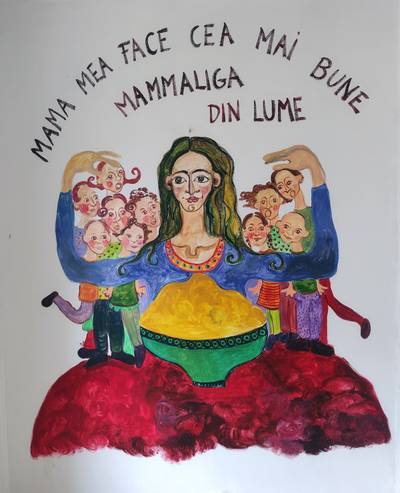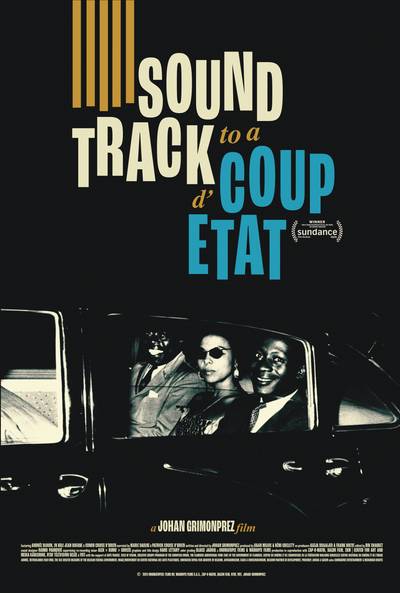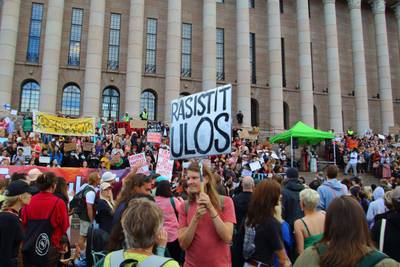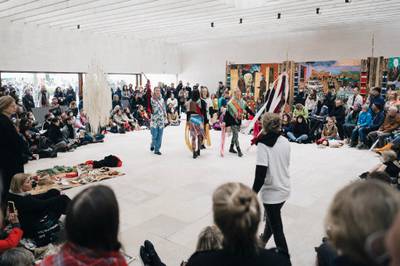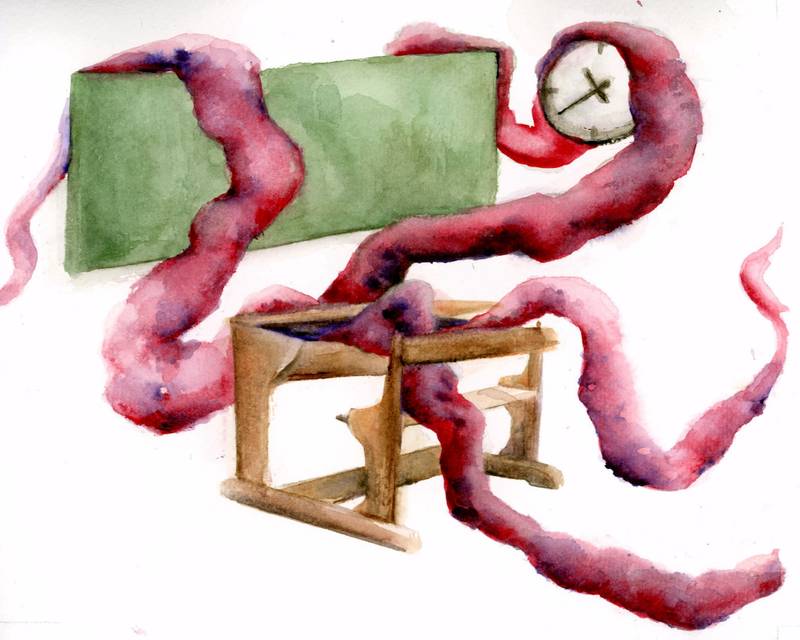

Illustration by Emma Hovi
Emma Hovi is an art educator, artist and independent researcher based in Helsinki. Her work has been featured in different contexts and places such as Austria, Sweden, Finland and Hungary. Her current work investigates monstrosity and Otherness in educational philosophy and pedagogy through the arts.
Can a child be a monster? asks journalist Päivi Happonen in an opinion piece published by YLE last year, responding to a case of violent abuse in which four students physically harassed a younger student in their schoolyard in Vantaa during breaktime. The injuries were severe enough for school staff to call an ambulance. In past decades, Finnish society has witnessed several cases of major physical abuse on school premises and violence against teaching staff. Add to this, three school shootings and two other deadly uses of weapons in school facilities between 1981 and 2019.
In this light, Happonen’s monster metaphor may not cause much offence. Violence perpetrated by children tilts society out of joint and leaves the public grappling for explanatory models. Perhaps what makes a violent child particularly horrifying is the transgression of deeply entrenched conceptions of purity and innocence surrounding childhood. A violent child becomes in a sense unrecognizable, the act of violence an “excess of alterity” (Tavin et al., 2019, p.12). Indeed, Happonen’s comment reveals a form of cultural logic compelled to deem as monstrous that which its sense-making mechanisms fail to grasp. Yet a more careful engagement with the figure of the monster offers tools to open up the premises of such ‘logic’ for examination. In the context of education, if a child guilty of horrifying deeds can be considered a monster, then what exactly is the monstrosity that pedagogical intervention is supposed to tame?
But when does the Other become monstrous? Supposing that the cultural meaning of the monster exceeds that of the Other, where ought one look for it? One possible way to think about this nuance is to distinguish between processes of Othering and processes of monsterising. While both pivot on vilifying difference, processes of monsterising are distinctly disciplinary in character.
There is no doubt that school bullying and violence between children and youth are utterly alarming realities that seem to be growing into unforeseen proportions. My point is not to discredit Happonen. Rather, I want to consider how the figure of the monster may nuance and mobilize deeper thinking around issues of structurally produced alterity in formal schooling. In this essay, I offer the figure of the monster as a thinking-tool for approaching questions of otherness, excess and ambiguity in educational settings. Engaging with the monstrous offers ways to review narratives of purity and belonging surrounding different learners, while re-organizing cultural notions of wicked and good, normal and pathological. I will begin by fleshing out the concept of the monstrous in greater detail, looking at the budding work on monstrosity within different strands of educational philosophy. In this light, I then offer an excursion into Juliana Huxtable’s artwork ZOOSEXUALITY (2019), elaborating on the ethical and aesthetical considerations prompted by the thinking-tool of the monstrous. Finally, I sum up some coordinates for developing aesthetically oriented, monstrous pedagogies.
Thinking with monsters & Others1
Monsters come in all sizes and shapes. Monsters are liminal creatures moving along all the boundaries that separate nature from artifice, human from non-human, normal from pathological, or pure from contaminated. Etymologically, the monster is described as a body that both demonstrates (Lat. monstrare) and warns (Lat. monere). That is, the monster is a body with distinct functions in relation to the culture that created it, that needs the monster in order to grasp and give identity to itself. Asa Simon Mittman (2012) has observed that monsters in fact do a great deal of cultural work as they trouble, haunt, worry, tear apart, prop, backup and mirror back to any given community its cultural norms, values and moral codes. In this sense, the monster becomes the Other, a socio-politically constructed figure that serves as a structure opposing and constructing ‘the self’. The Other could be understood as the end-product of discursive and biopolitical mechanisms that actively produce and vilify difference in order to maintain dominant notions of normality and purity. In the words of Dominique Lestel (2012), the monster should be understood as “a constitutive dimension of our psychic ecology rather than an aberration of the living” (p. 261).
Yet the link between self and Other is not necessarily a straightforward one. In her work on theorizing and historicizing the monster, Gayatri Chakravorty Spivak calls for scrutiny of the notion of self that lies at the core of ethical ideals in Western humanist traditions. If the self serves as the foundation for supposed understanding and respect, then in order to be recognized as a subject worthy of ethical consideration, the Other needs to be acknowledged as oneself. Spivak warns that such ethical orders threaten to reinforce oppositions that fix the Other as potentially immoral and in need of enlightenment (see Hellstrand et al., 2018, p. 150).
But when does the Other become monstrous? Supposing that the cultural meaning of the monster exceeds that of the Other, where ought one look for it? One possible way to think about this nuance is to distinguish between processes of Othering and processes of monsterising. While both pivot on vilifying difference, processes of monsterising are distinctly disciplinary in character. This point has been elaborated by Hellstrand et al. (2018), who suggest that processes of monsterising are systems by which certain bodies and certain lives are disciplined and controlled through detainment, imprisonment, hospitalization or, more recently, technologies collecting biodata stored in internationally shared data servers. The ongoing violation of migrants and refugees paired with increasing border militarization exemplify such monstrous measures.
Yet monsters also describe an excess that reaches beyond structures of Otherness. Monsters evoke something strange and paradoxical, something tilted out of joint, a creeping horror of the unknown. This approach to the monstrous does not ignore, yet extends beyond Othering and monsterising processes by formulating monstrosity as a form of ontological reality. This monstrosity could be expressed in terms of a ‘gothic feeling’ of impending catastrophe, brought on by forces that out-scale and outlast humans in the here and now, as Lysgaard et al. (2019) have observed. Global warming, extreme weather conditions and mass extinction are manifestations of such monstrous forms of cosmic horror that are inscribed into our very existence. In this sense, the monster emerges as a troubling presence that sticks to everything, yet it remains impossible to reach out for it and examine it in any tried and trusted way.
In the context of education and learning, the thinking-tool of the monster prompts questions about how existing pedagogical practices facilitate processes of differentiation that reinforce the aggressions of binary logic. It further calls for experimentation with different techniques of embracing and responding to instability and radical ambiguity, nurturing new collective and individual capacities that challenge prescribed modes of imagining, thinking, sensing and moving.
A related, perhaps more politicized approach to the monster is found in the work of educational philosopher Tyson E. Lewis (2010; 2012; 2020), who has spent decades theorizing the place of the monstrous in educational theory. Lewis mobilizes the figure of the monster as a vehicle for imagining post-human and anti-authoritative, radically democratic forms of education. In Lewis’ work, the monstrous is conceptualized as an ontological modality, a destabilizing force of excess and uncontainability. When placed within educational contexts, this concept of the monstrous challenges ideals that cast learning either as the self-realization of the individual learner as ‘human’, or the adjustment of individual learners to the demands of centralized authority. Lewis calls for monstrous pedagogies capable of engendering new political narratives, intelligences, subjectivities and bodily capacities in excess of prescribed ways of imagining, thinking, sensing and moving. In other words, the monstrous is understood as infinitely creative ontological becoming in excess of fixed categories. It is a force that suspends binary thinking in favour of something else to emerge, be it new kinship alliances between species, new social and bodily relations or new institutional ecologies.
The monster vexes and sways culturally cemented forces, teasing out that which is yet to become thought, felt, perceived and known. Thus as a thinking-tool, the monster articulates instability, the unknown, the not-quite, while also calling out and questioning categories of structural and material differences (Hellstrand et al., 2018). In this sense then, studying the monster is to examine ethical, ontological and political questions especially urgent in times of global warming escalating at horrifying speed, paired with ramped-up violence waged by humans towards human peers and non-human life-forms alike. In the context of education and learning, the thinking-tool of the monster prompts questions about how existing pedagogical practices facilitate processes of differentiation that reinforce the aggressions of binary logic. It further calls for experimentation with different techniques of embracing and responding to instability and radical ambiguity, nurturing new collective and individual capacities that challenge prescribed modes of imagining, thinking, sensing and moving.
Monstrous schooling
Thinking with the monster appears particularly timely as formal Finnish education is being exposed as part of societal apparatuses producing structural Otherness and ostracization, often with racist undertones. While permeated by a stubborn pretense to neutrality and equality, in recent years, researchers have exposed the eugenic ideologies and strong ethnocentric ideas at the roots of the contemporary Finnish school system. Among others, Ina Juva (2019) has shown how this ideological heritage filters into contemporary contexts for example through social and cultural constructions of normality in public schools.
According to Juva, “part of being a ‘normal’ subject in a Finnish school is to be Finnish and that includes speaking Finnish and being white” (p. 52). In her doctoral dissertation, Juva examines constructions of Finnishness as normality in two upper comprehensive schools in the capital region of Finland. Based on interviews with teachers and other staff, Juva found that the interviewees tended to insist on the neutrality of school as a place promoting equality between all students. Belonging and being normal was conceived of as something that can be chosen individually, while discrimination and racism were understood as conflicts between individuals rather than structural issues tied up with the culture of the school community and societal attitudes at large. However, migrant students and students with migrant backgrounds were constructed as a group who shared negative traits. In a podcast produced by Ruskeat Tytöt (Eid & Ahmed, researcher Anna-Leena Riitaoja points out that success in Finnish schools often depends on students’ ability to develop certain behaviours and social skills that are coded as typically middle-class and white. Students challenging these specific behavioural patterns are commonly considered threatening. As an institution then, it appears the Finnish school system is permeated by processes of differentiation by which certain students are singled out as problematic, threatening and abnormal. Engaging with the figure of the monster opens up the possibility to examine formal education and schooling as forms of large-scale attempts at taming, or gentrifying pedagogical spaces and relationships. Within the context of education and learning, gentrification could be understood as the enactment of norms by which “expressible and pleasant subjectivities” are safeguarded and managed to maintain “positions of the moral teacher, ethical educational content, the good student, or acceptable classroom interaction” (Wolgemuth et al., 2019, p. 25). As boundary creatures marking the limits of what is indeed considered morally acceptable, monsters can be mobilized to point to that something which pedagogical practices aim to transform, correct and, as it were, replace.
In fact, education and formal schooling have long been discussed within discourses of social control and discipline. Among the more well-known approaches is the work of sociologist Pierre Bordieu, who exposed systems of education as instruments of conservative power in the 1970s. In turn, Bordieu’s contemporary Michel Foucault viewed education as one of several nodes in the interlocking system of “disciplinary technologies” in early modern European societies (Deacon, 2006). For Foucault, education is a monstrous force of power and discipline, which enacts control over the transgressive intents of childhood. Education has a correcting function on the level of morals but also on the direct level of the body. Others still have argued that in its attempts at taming excess tendencies, education becomes a monstrous undertaking in and of itself, evident for example in institutional racism in school communities (Erle & Hendry, 2020).
On excess
Studying the monstrous in its different manifestations has long been of interest to literary and history scholars, joined in the 1980s by thinkers in feminist, queer, postcolonial and critical race studies. Interest in the monstrous is growing also among sociologists, contemporary anthropologists, deep ethnologists and researchers in digital culture, not to mention artistic work engaging with monstrosity.2 While the intersection between monster theory, art and educational philosophy is still scarcely researched, the theme of monstrous excess has recently begun to be explored specifically in relation to art education.
For Lysgaard et al. (2019), monstrous excess is conceived of as the unknown, therefore terrifying dimension of existence that defines life in the age of the Anthropocene.3 In the work of Tyson E. Lewis, monstrous excess refers to the collective production of material and immaterial means for creating new forms of life that exceed the political imagination of centralized authority. In Art, Excess, Education. Historical and Discursive Contexts, Tavin et al. (2019) put forward distinctly pedagogical concerns about how to respond to affective moments mediated through contemporary artworks dealing with excess, “when the grounding of our human subjectivity and limits of our knowledge are troubled” (p. 12). Bringing together a collection of essays in contemporary art and art education, exploring topics ranging from abjection and disgust to the grotesque and death, the editors suggest the notion of a pedagogy of provocation to describe an educational outlook that invites engagement with difficult, complex issues that a gentrified classroom fails to accommodate. The works of contemporary art discussed in the volume raise questions not only about how the world could be turned into a more beautiful and harmonized place, but also inquire about “how to deal with those things that are in us, and that are more than us—our excess of alterity” (p. 12).
A slightly different reading of monstrous excess in the arts is found in the work of Marietta Radomska (2018), who has explored the ontological implications of bioart. Through the largely technological manipulation of living matter (cells, tissue, entire organisms), works of bioart raise questions about relations between the living and non-living, human and non-human, organic and artificial. Bioart exposes “various thresholds of the living”, as Radomska puts it (p.1). In her reading of Victimless Leather (2004), possibly the best-known work of bioart by the Tissue Culture and Art Project, Radomska finds a notion of life itself as uncontainable: “life as always already characterised by a potential for excess” (p.4). In turn, the philosopher Dominique Lestel (2012) finds in bioart an illustrative example of what he conceives of as humans’ alarming desire for monsters. Lestel describes a normalization of human desires to meddle with and manipulate other species, which is itself a monstrous phenomenon. For Lestel then, as a species, humans are its own monsters.
In this light, if the notion of the monstrous pivots on excess, in pedagogy through the arts, the monstrous emerges as forms of transgression that acquire creative potential. Approached through the arts, instead of fulfilling the moralizing function of cautionary tales, monstrous excess offers occasions for re-situating ourselves (any given learning community) within a world in which nothing is fixed, but rather charged with the potential for constant transformation and re-figuration. For art educators, aesthetical expressions of monstrous excess offer up plateaus for embracing the double bind of uncertainty/potentiality as a constant of existence.
Juliana Huxtable’s indulgent excesses
These various aspects of monstrous excess resonate particularly well in the work of Juliana Huxtable, which moves between visual art, poetry, performance and sound. Huxtable’s art has become known for queering online discourses and popular visual catalogues. Her work explores the aesthetics of an era in which our daily experiences, our bodies, feelings and interactions are framed by digital technology with the imperative to control and, if necessary, correct. Taboos, transgression and fetishization are recurrent themes for Huxtable, as are non-binary expressions of gender and sexuality, representations of race and the way identities are constructed online.
ZOOSEXUALITY (2019)4 is a series of six colour portraits in bare wooden frames strewn with homemade badges and stickers installed in a wallpapered space. The work addresses questions of identity-building and fetishization. Presented at Art Basel in Hong Kong 2019, the photographs were installed in a booth covered in a modest-looking wallpaper, which upon closer inspection reveals a pattern of intergender reproductive systems. Three of the portraits show Huxtable’s body in poisonously green body paint, twisted into impossible shapes on a vignette upholstered bed wearing plastic heels. The settings evoke stylized hotel rooms lit in purple and turquoise, complete with fitted carpets and a curtain of what appears to be plastic flower petals. In one of the portraits, Huxtable’s face morphs into an anthropomorphic reptile with long Disneyfied eyelashes, a glimpse of some cartoon evoking stock imagery of friendly animals, more a confusing creature than monsterised Other in need of taming.
The remaining three portraits are shot in a simpler setting against a backdrop of vibrant yellow and green blurring the horizon line. In one of the pictures, a tractor appears to be crossing a green field. Huxtable poses with three pairs of tits, her unclothed body a hue of red that is both sickly and appealing in its resemblance to raw beefsteak. Again, her face morphs into a cartoonish pig, framed by big hair. In one of these portraits, Huxtable faces the camera in a generic pin-up pose, her head tilted to the side, showing off her triple-tits. Huxtable’s person now posing, now twisted into fierce knots in the carefully arranged set-ups affords an almost entertaining quality, framed by the bare wooden frames. In fact, the framing device is less the material wood itself than the slogans found on the DIY stickers and badges attached to them, speaking out claims to fantastical, impossible identities: “I <3 reptilian humanoid”, “QUADRUPEDAL AS FUCK”, “Darwin’s dream girl”, “INTERSPECIES LIBERATION FRONT” and “END ANIMAL HUSBANDRY”. Extending beyond the frames, the wallpaper decorated with symmetric patterns of anarchic biology weaves it all together, reminiscent both of sacred geometry and wire fences circumscribing facilities of intensive animal farming. ZOOSEXUALITY also points to controversies surrounding furries and Otherkin, the latter a community of people identifying as not entirely human, while furries are people with an unusually keen interest in anthropomorphized animals.
Huxtable’s artwork could be understood as an exercise in deconstructing contemporary projects of identity-building, prompting questions about desire - when it is taboo and when it is not. ZOOSEXUALITY deals in anarchic, excessive, elastic identities, a meditation on the limits of transgression within a culture ultimately pivoting on spectacle and death. The artwork raises crucial ethical questions about representational practices and cultural narratives surrounding difference. To me, one of the most pressing concerns raised by ZOOSEXUALITY seems to be whether human desire for intimacy with other species must necessarily be fetishizing and destructive, or whether a deeper form of bonding with non-human life-forms could potentially grow out of the free play of such desires, beyond species identification. Yet the piece does not come across as in the least moralizing. Instead, Huxtable manages to mediate a funny yet defiant queerness that is rather psychedelic, as recognition and intimacy blends with estrangement and confusion in a weird delight.
Where to go from here
The conceptual framework of the monstrous encourages pedagogical practices to depart from a critical approach to subjectivity and identity, anchored in the acknowledgement that all life is essentially uncontainable, charged with potential for excess and re-figuration. Yet concepts are never neutral, and voices are in fact quite personal and intimate. My voice is necessarily anchored in my experience of growing up in a highly educated, upper middle-class context in Finland. I am white, normativley abled, I pass as a cis-woman and I am fluent in the majority language. These are absolutely formative points of access to the landscapes of monsterising and alterity that I have tried to outline throughout this essay. For someone to pick up on the thematics of the monstrous that is differently situated would be most urgent, in order to enhance collective understandings of the potential and limits of the monstrous as thinking-tool, both in pedagogy through the arts and education at large.
Thus, monstrous pedagogies are artful, experimental, yet in keeping with uncertainty, do not posit final learning outcomes.
That said, I do want to offer some coordinates for formulating and experimenting with monstrous pedagogies on different levels. Departing from the general understanding that monsters articulate zones of indetermination at the limits of the recognizable and intelligible within any given context, then pedagogical strategies that adopt the monstrous as thinking-tool are called upon to seek out and rehearse that which presently appears impossible to do. Perhaps the task of monstrous pedagogies could be formulated as a form of unlearning culturally cemented ways of relating to self and other, instead nurturing imaginative, perceptual, affective and bodily capacities and intelligences for breaking out of fixed subject positions, stagnant imaginations and inherited response patterns.
Thus, monstrous pedagogies are artful, experimental, yet in keeping with uncertainty, do not posit final learning outcomes. At the same time, crucially, monstrous pedagogies must commit to examining their own place within schemes that exercise violence, symbolic and material, towards those who are left out of meaning-making processes and rendered different. One way to understand such violence is the aggression manifested in attempts to conform students to fit dominant constructions of normality. Thus, thinking with the monster demands us to keep interrogating the desires, whether individual or societal, that motivate pedagogical intervention in the first place.
